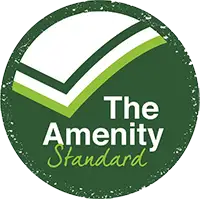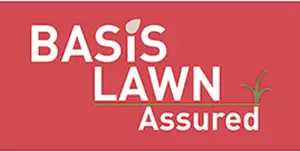Red Thread
Red Thread and Pink Patch.
Red Thread – Laetisaria Fuciformis
Pink Patch – Limonomyces Roseipellis
Suscepitlbe to all turf grasses, but more servere on fine Fescue and perennial Ryegrass. Commonly occurs in Autumn and Spring.
Red thread causes patches that are reddish-brown in colour and 1 to 4 inches in diameter up to 2 feet. Pink patch causes a gelatinous mass of pink mycelium with water-soaked leaves.
Red Thread is often seen on lawns in the UK normally from mid summer through to and including the autumn. It can develop on all lawn types but is often seen on fine fescue lawns. its a fairly minor disease that in most cases does relatively little damage, but can spoil a well kept lawns appearance. It is spread by spores within the air.
What causes the disease?
Red Thread is caused by two stress factors biotic and abiotic, such as temperature extremes, humidity, air flow and lawn cutting height. If your lawn has been affected by the disease, we would suggest you change the ideal conditions the disease likes. Lawn cutting height would be the simplest to change.
what does it do?
It can leave patches of turf in a ‘straw like’ brown condition, which can leave the entries lawn with al all over unsightly mottled effect. Studied closely you may see red needles or pink ‘cotton-wool’ like growth on the effected areas. This is the manifestations of the fungus. More often than not, the disease will run its course and as the turf grows the disease becomes less obvious, it is very rare for Red Thread to deemed worth of specialist treatment.
What Treatments can be used?
On many occasions a applications of fertiliser is more than sufficient to promote growth which would be removed by cutting. The feed also strengthens the plant enabling it to ‘outgrow’ the disease. If conditions are suitable, typically in autumn, iron can also be used to dry out the fungal disease. However, treat to early and the iron doesn’t make contact with the fungi’s and too late defeats the object.
Our Happy Roots to Happy Shoots program will help with building up the plants natural ability to withstand and recover from infection.
Are chemical controls available?
Fungicides for the control of Red Thread have and continue to be withdrawn from both the amateur and professional markets. This is making the necessity for improved cultural such as regular scarification and seeding with more resistant strains essential especially for finer fescue lawns prone to attack.
Recommended Non-chemical control
If red thread appears, application of nitrogen to the affected area will often be sufficient to control it. Do not apply too late into Autumn to avoid the production of soft growth which is prone to snow mould.
The threat from red thread can be reduced by taking action to improve the drainage and aeration of the turf. Scarifying the turf with a lawn rake or electric scarifier will remove thatch and moss and increase aeration. Poor drainage and compacted areas can be alleviated by forking or by the use of a solid-tine or hollow-tine aerator. Ensure that the soil is not deficient in nitrogen. Disposing of (not composting) grass cuttings will reduce the amount of fungus present to re-infect the lawn.
The thread-like structures (stromata) can survive on leaf debris and in the soil for up to two years. Spread of the disease can occur by airborne or waterborne spores, or on contaminated tools or shoes. Prolonged leaf wetness is required for infection, so red thread is most likely to be a problem in wet summers and during heavy dews in autumn.
Managing red thread disease in turf yourself
There are some simple means for reducing the development of red thread, but make sure you actually have the red thread disease before you try and manage it. If you are installing new turf, ask your turf supplier if the turf they produce has good red thread resistance. Fertilise your lawn properly. Water your turf properly, but do not over water. Mow your grass properly.
Best Practice?
When looking at treating disease, you should always consider what cultural and biological improvements can be incorporated. The process of completing two actions dramatically increases your chance of success e.g. Scarification and Aeration will have better results than scarification alone.
Can anything be done now?
Normally the promoting of new growth with the fertiliser will help, as you then cut out the active fungal growth, We would suggest to check to see if you’re looking at the primary effect i.e. red spikes or the secondary effect of the brown ‘straw like grasses’, affected brown grasses will not revert to green, until new grass growth occurs.
If Primary effect
If it is red spikes of fungal activity, this is already the later development stages, an application of a liquid feed would be beneficial, combined with a frequent cut to remove the affected grasses, but you may choose to treat with a contact fungicide for additional protection. If you would like us to treat your lawn, we can provide a quotation for this.
If Secondary effect
Rake out brown patches and over seed the area with a good quality grass seed. We recommend stock Green Velvet, modern grass seed mixes like Green Velvet All Rounder are more resistant to fungal diseases like Red Thread.





